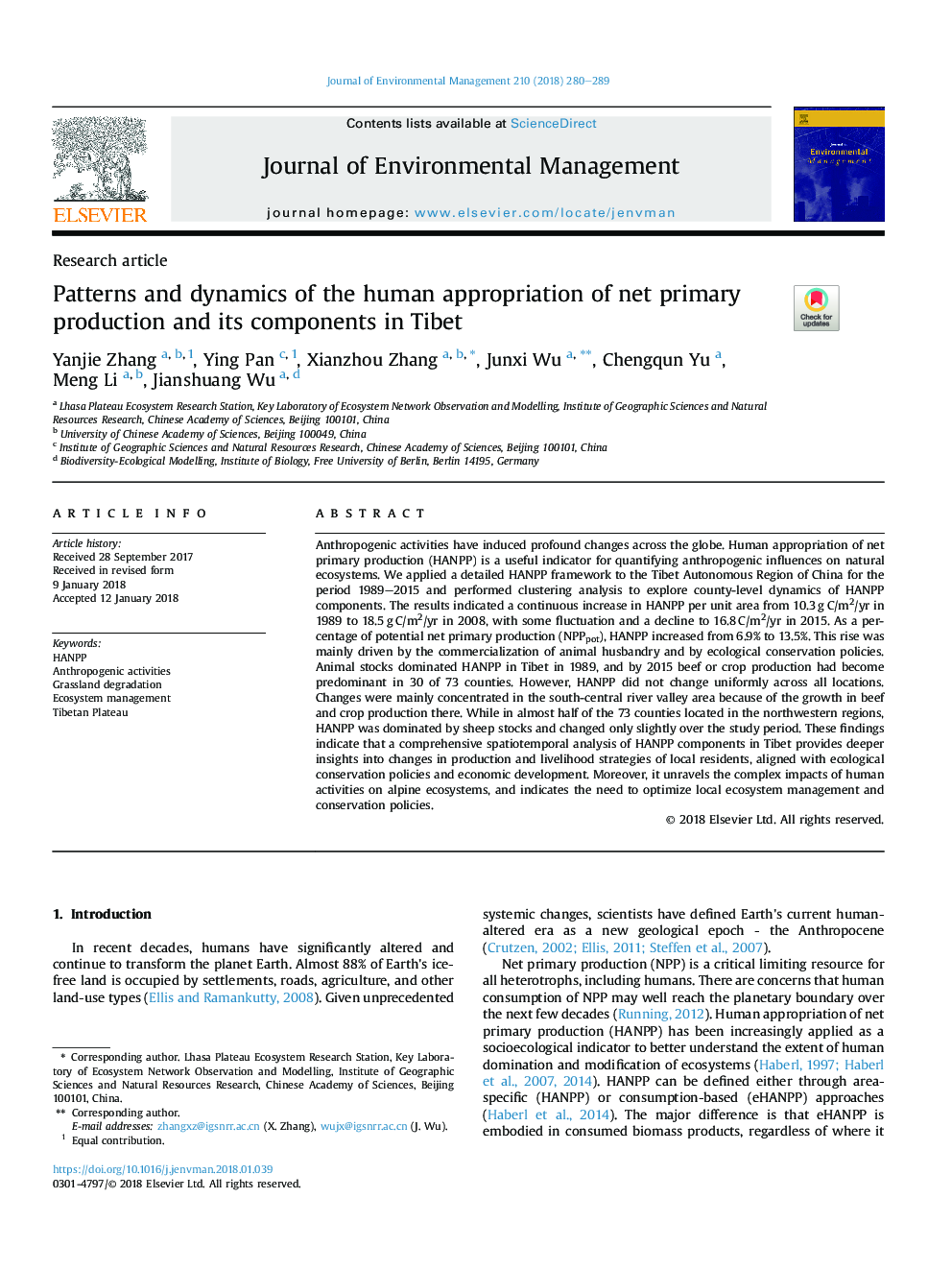| Article ID | Journal | Published Year | Pages | File Type |
|---|---|---|---|---|
| 7478305 | Journal of Environmental Management | 2018 | 10 Pages |
Abstract
Anthropogenic activities have induced profound changes across the globe. Human appropriation of net primary production (HANPP) is a useful indicator for quantifying anthropogenic influences on natural ecosystems. We applied a detailed HANPP framework to the Tibet Autonomous Region of China for the period 1989-2015 and performed clustering analysis to explore county-level dynamics of HANPP components. The results indicated a continuous increase in HANPP per unit area from 10.3â¯gâ¯C/m2/yr in 1989 to 18.5â¯gâ¯C/m2/yr in 2008, with some fluctuation and a decline to 16.8â¯C/m2/yr in 2015. As a percentage of potential net primary production (NPPpot), HANPP increased from 6.9% to 13.5%. This rise was mainly driven by the commercialization of animal husbandry and by ecological conservation policies. Animal stocks dominated HANPP in Tibet in 1989, and by 2015 beef or crop production had become predominant in 30 of 73 counties. However, HANPP did not change uniformly across all locations. Changes were mainly concentrated in the south-central river valley area because of the growth in beef and crop production there. While in almost half of the 73 counties located in the northwestern regions, HANPP was dominated by sheep stocks and changed only slightly over the study period. These findings indicate that a comprehensive spatiotemporal analysis of HANPP components in Tibet provides deeper insights into changes in production and livelihood strategies of local residents, aligned with ecological conservation policies and economic development. Moreover, it unravels the complex impacts of human activities on alpine ecosystems, and indicates the need to optimize local ecosystem management and conservation policies.
Related Topics
Physical Sciences and Engineering
Energy
Renewable Energy, Sustainability and the Environment
Authors
Yanjie Zhang, Ying Pan, Xianzhou Zhang, Junxi Wu, Chengqun Yu, Meng Li, Jianshuang Wu,
